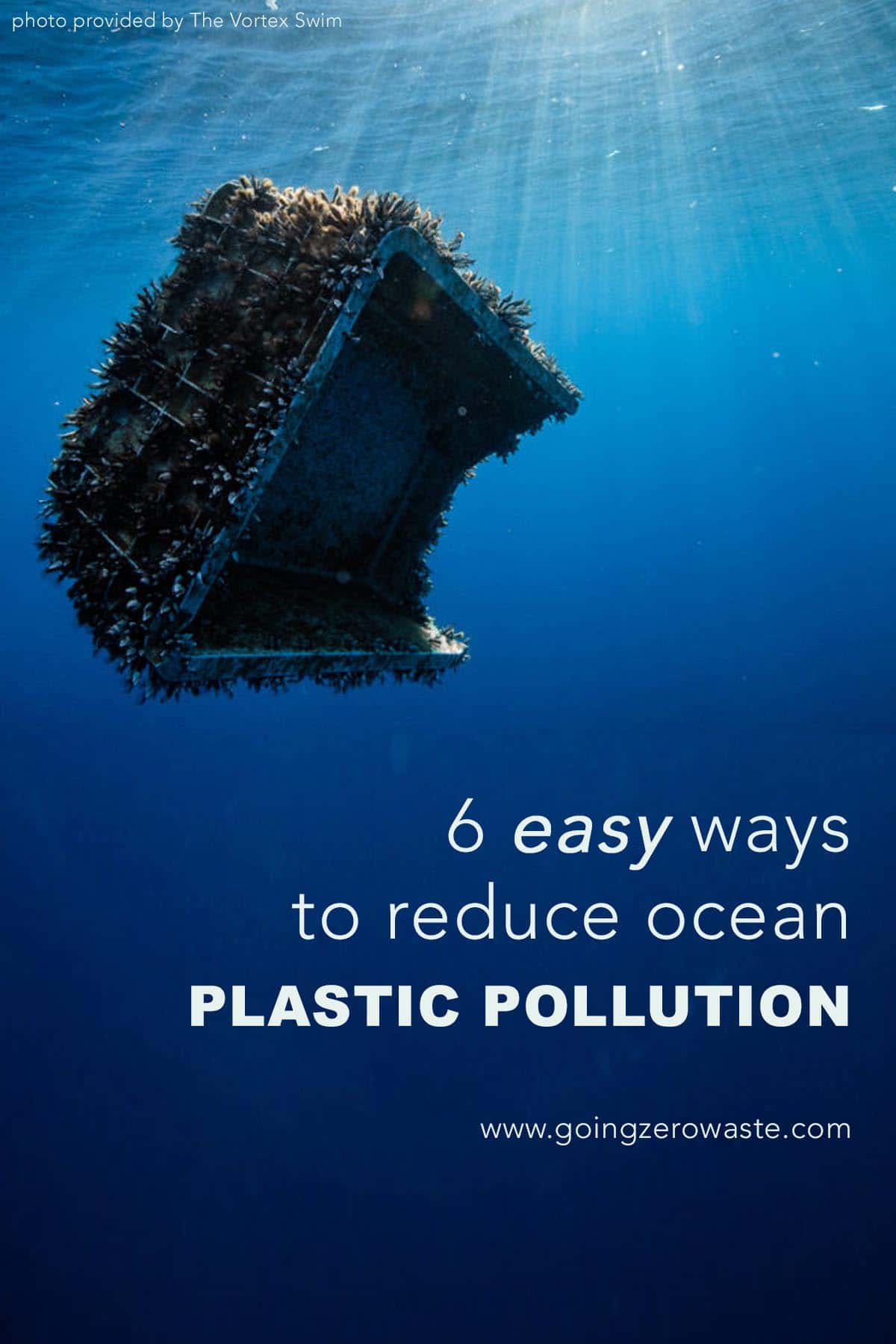[ad_1]
Last Updated on February 10, 2023
Pollution in the ocean is a major problem for world and human health. Reducing the amount of plastic in the ocean can improve the health of mother nature and keep microplastics out of drinking water, rain, and even human placenta.
Ocean pollution effects run deep. Marine animals are injured, entangled, or even killed by plastic in the ocean. It’s important to save the ocean to maintain potable water sources and avoid contamination in our food chain. The causes of water pollution come mostly from human activity and affect human health as well as planet and animal health. These 6 steps will teach you how to prevent ocean pollution to save our planet.
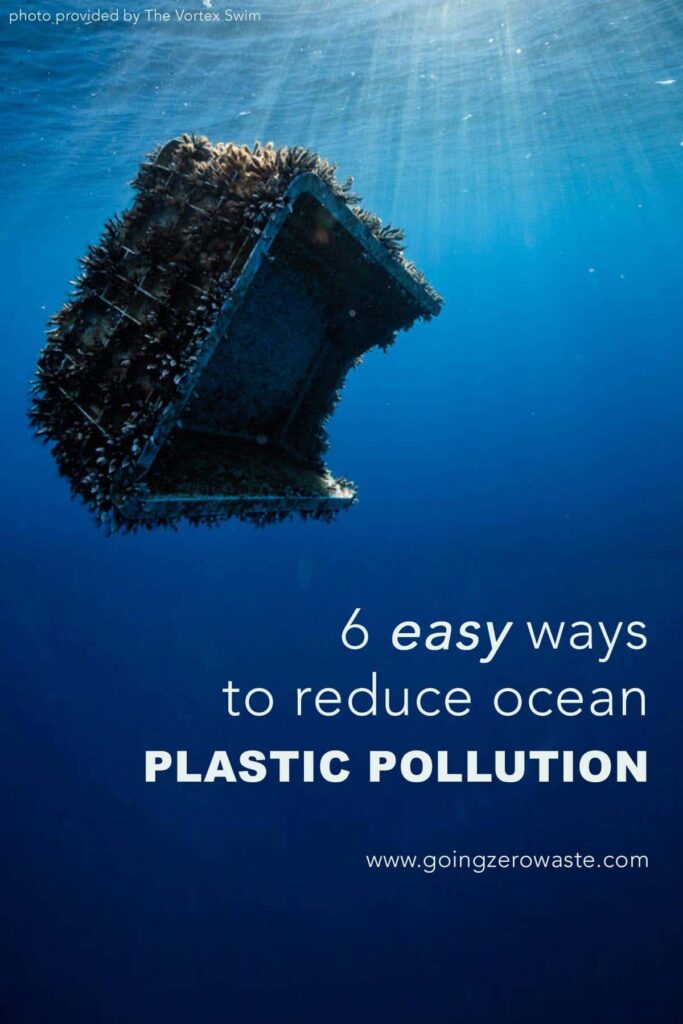

pollution in the ocean
Three hundred million tons of plastic are produced every year, and over 8 million tons of it winds up in our oceans. There is currently no landscape that hasn’t been touched by plastic. Even remote islands without human inhabitants have beaches filled with plastic.
It’s actually raining micro-plastic pieces now.
Plastic has been found in the arctic, in salt, 84% of drinking water worldwide, and as deep as the Mariana Trench. Plastic is everywhere. And, plastic doesn’t ever go away. Plastic doesn’t biodegrade. It won’t turn back into soil.
Instead, over time, it becomes brittle and breaks into smaller and smaller pieces until it’s so small that it’s a micro- or nanoplastic. A microplastic is a tiny piece of plastic — on average 3mm-5mm.
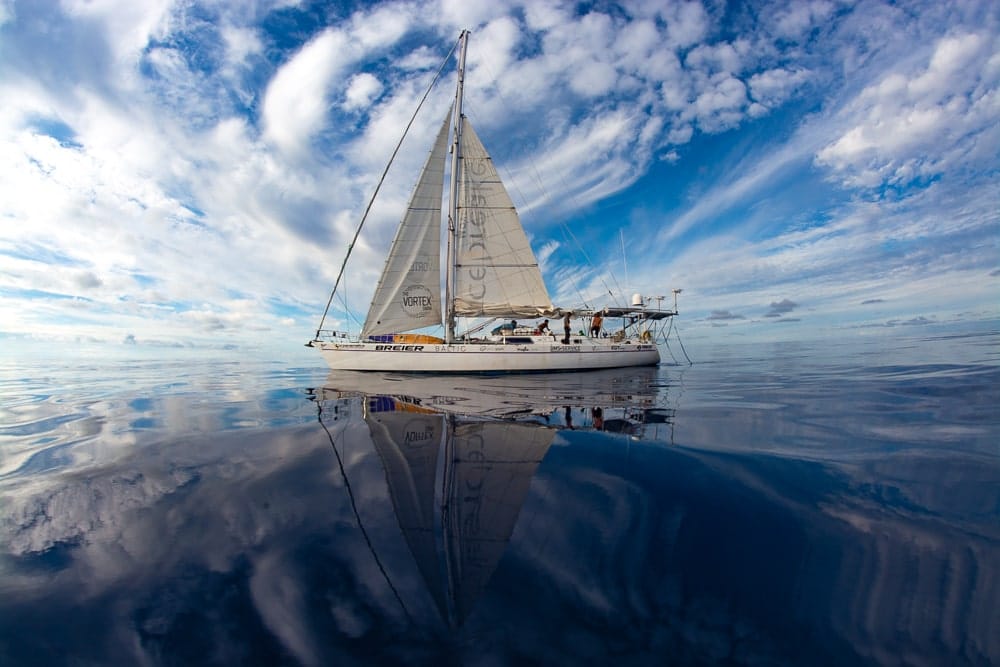

Some plastics are created small like microbeads and glitter, while others become microplastics — think your leggings shedding polyester fibers in the wash, tire treads slowly wearing away, fishnets being thrown overboard, and common types of plastic like water bottles, plastic bags, coffee cups, etc. breaking apart due to rough ocean conditions.
To be honest, the microplastic problem seems distant and foreign to me.
Yes, even someone who talks about the plastic problem ALL. THE. TIME. can have issues with grasping the actual scale of the problem since I’ve never experienced it in person.
This is why it’s been AMAZING to follow along with The Vortex Swim and learn more about ocean pollution effects and how to prevent ocean pollution.
I’m very excited to be partnering with Icebreaker, who sponsored The Vortex Swim to raise awareness around these issues. All thoughts and opinions are my own. For more information, please see my disclosure policy.
why you should want to save the ocean
- Pollution in the ocean has consequences that extend beyond the ocean, and affect you even without you knowing!
- The ocean provides climate regulation, food, and jobs (among other things). It can’t do its job if it’s unwell.
- Many causes of ocean pollution are completely avoidable – most people just need to be educated on the importance.
how to prevent ocean pollution
the vortex swim shines a light on the effects of microplastics
The Vortex Swim started in Hawaii where Ben Lecomte, a long-distance swimmer, spent 100 days at sea swimming (YES. SWIMMING!) through the Pacific Ocean right through the heart of the Great Pacific Garbage Patch AKA the Plastic Vortex.
He was followed by a crew on a boat to study these problems. He swam 350 nautical miles, collecting 45,000 microplastic samples from the Vortex, to raise awareness surrounding plastic in the ocean and to collect data for scientific research.
I got to meet Ben and talk with him about the experience. We talked about some of the most common types of plastic he found, as well as some of the weird things he found like toilet seats, crates, and a surprising amount of laundry baskets.
One of the things I admired most about the trip (beyond an incredible human SWIMMING from HI to CA) was that the entire crew tried to keep the boat plastic-free and zero waste! How amazing is that!
They used Super Bee Wax Wraps to avoid plastic wrap, Plaine Products shampoo that comes in a refillable aluminum bottle, and Avasol sunscreen that comes in a compostable tube!
You can see more on their Instagram Feed.
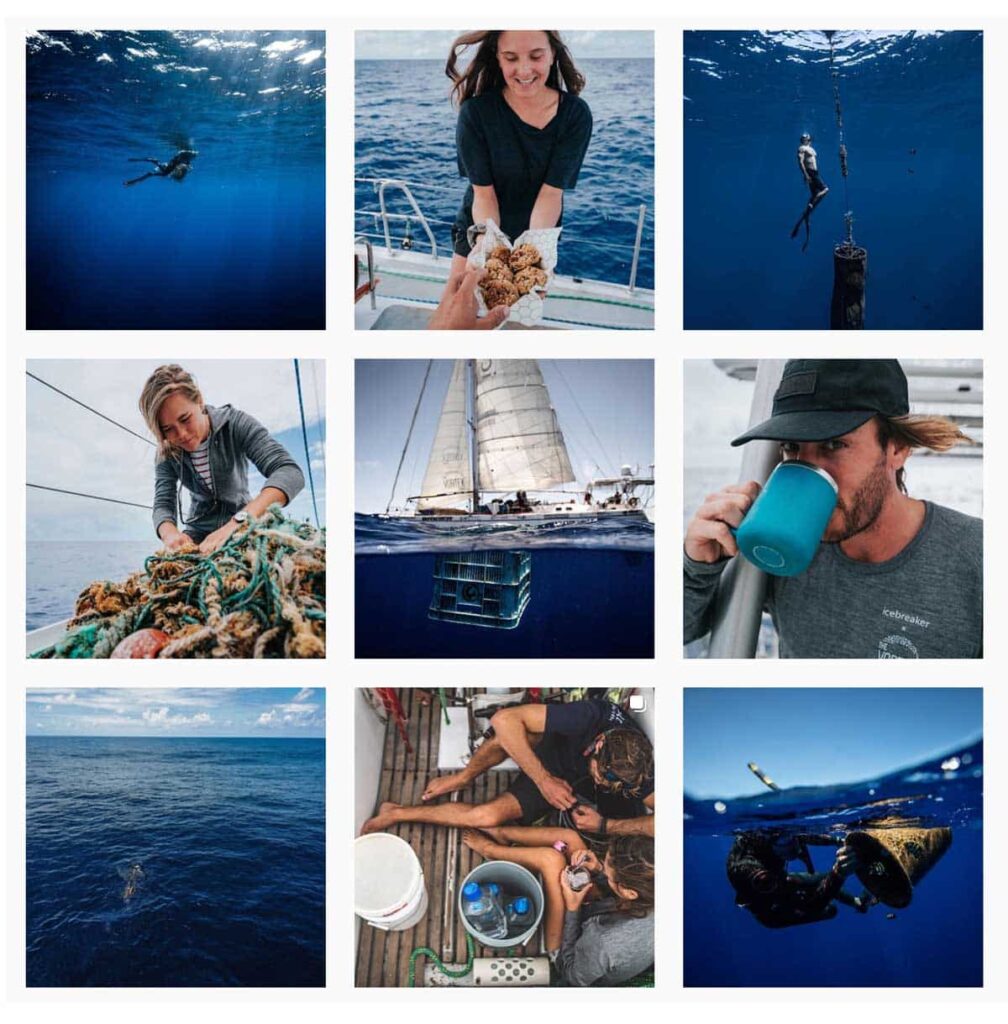

The goal of this mission was to shine a light on microplastics. Every day the team would skim the waters for 30 minutes to collect and count the microplastics in that area.
All of the data was sent off to be studied and used to create legislation to prevent the problems that ocean pollution will cause in the future.
Another reason they took the trip was to debunk the idea of a garbage island floating in the middle of the ocean. It’s not an island — rather a chunky soup filled with microplastic pieces.
ocean pollution effects on marine life
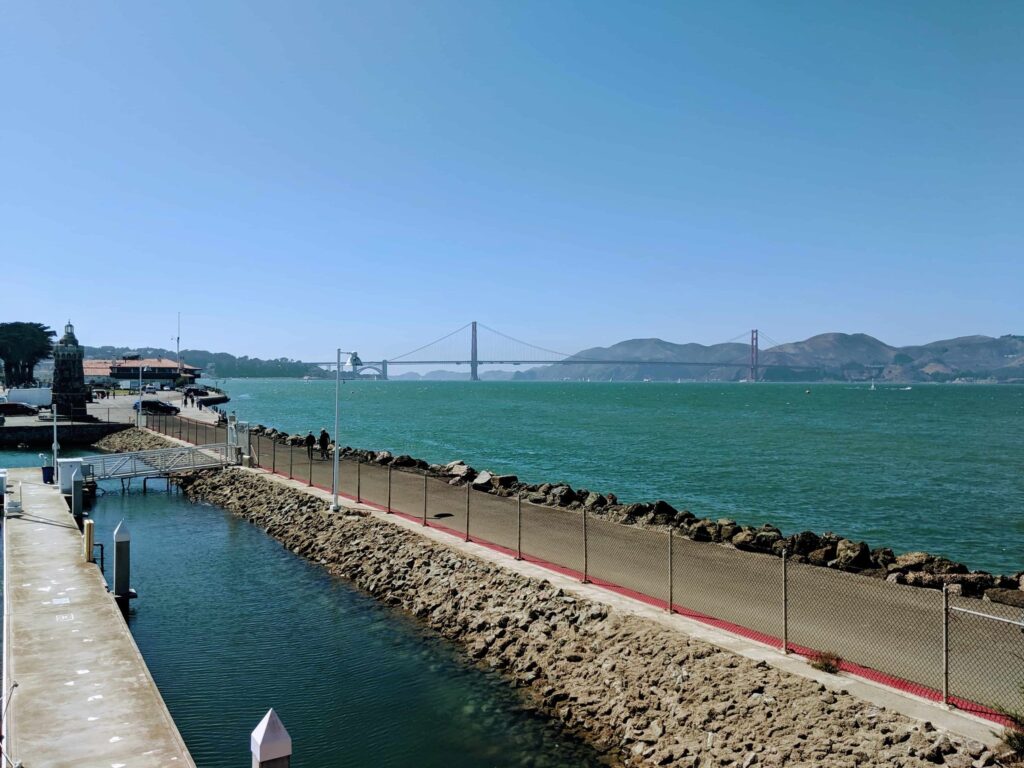

One of the things I found interesting was how marine life created habitats out of the plastic.
You can see all of the crustaceans living on the baskets, and schools of fish nesting in old nets. It was so odd to see them living in pollution which could eventually kill them.
The crew often saved marine life from being entangled in plastic, and they talked about the dichotomy of being excited to save them while being horrified that it’s a problem in the first place.
Icebreaker is selling the official crew shirts if you want to check them out. One of the reasons I love their clothes is that they’re made with natural fibers.
Icebreaker offers an average of 84% natural raw materials — one of the highest documented in the clothing industry — and they’re taking it even further to completely remove synthetic content from their collections by 2023.
That includes switching from plastic bags to shipping in a water-soluble bag by the end of the year! Learn more about how Icebreaker is reducing plastic.
I love that Icebreaker sponsored this incredibly eye opening expedition.
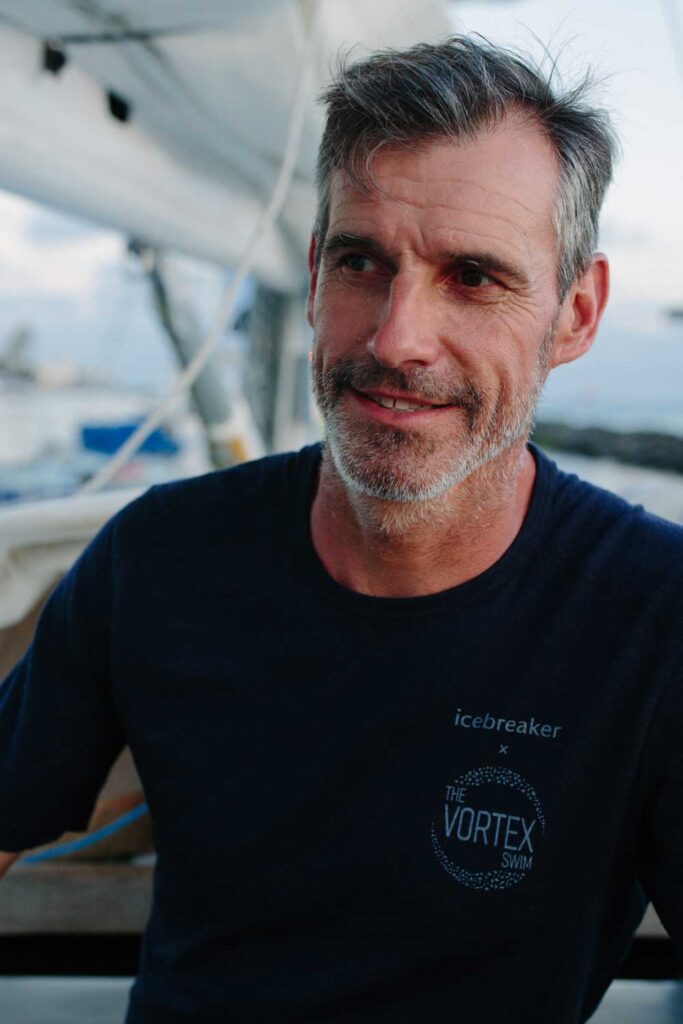

causes of ocean pollution
No one can save the ocean without understanding the main culprits of ocean pollution. Reducing (or eliminating) your consumption of these 6 items will reduce your impact on the ocean.
cause 1: single-use plastics
It should come as no surprise that single-use plastics are one of the biggest causes of ocean pollution. After all, that’s kind of what this blog is about…
But, I think you’d be surprised how much plastic you can eliminate from your life just by being conscious of the plastic you use. When it’s time to make a new purchase, a quick google search will turn up tons of sustainable, plastic-free swaps so you can switch out items like your toothbrush, disposable coffee cups, and water bottles, etc.
Ben said one of the most common household plastic items they found were bottle caps. Bottle caps are made of a lighter plastic, so they tend to float and stay near the surface where the bottles themselves tend to sink.
Most plastic isn’t recycled. Only 9% of all the plastic ever produced has EVER been recycled.
And, to make matters even worse, much of the plastic we “recycle” is dumped in countries that don’t have access to waste management infrastructure. This means that a lot of the plastic we’re “recycling” is actually winding up in the ocean.
This is why it’s so important to be mindful of the materials that you bring into your life.
First, REDUCE what you bring into your home. REUSE what you have, and after you’ve reduced and reused all that you can, then and ONLY then… recycle!
Of course, don’t forget to purchase products made with recycled materials. After all, are you really recycling if you’re not supporting companies using recycled materials?
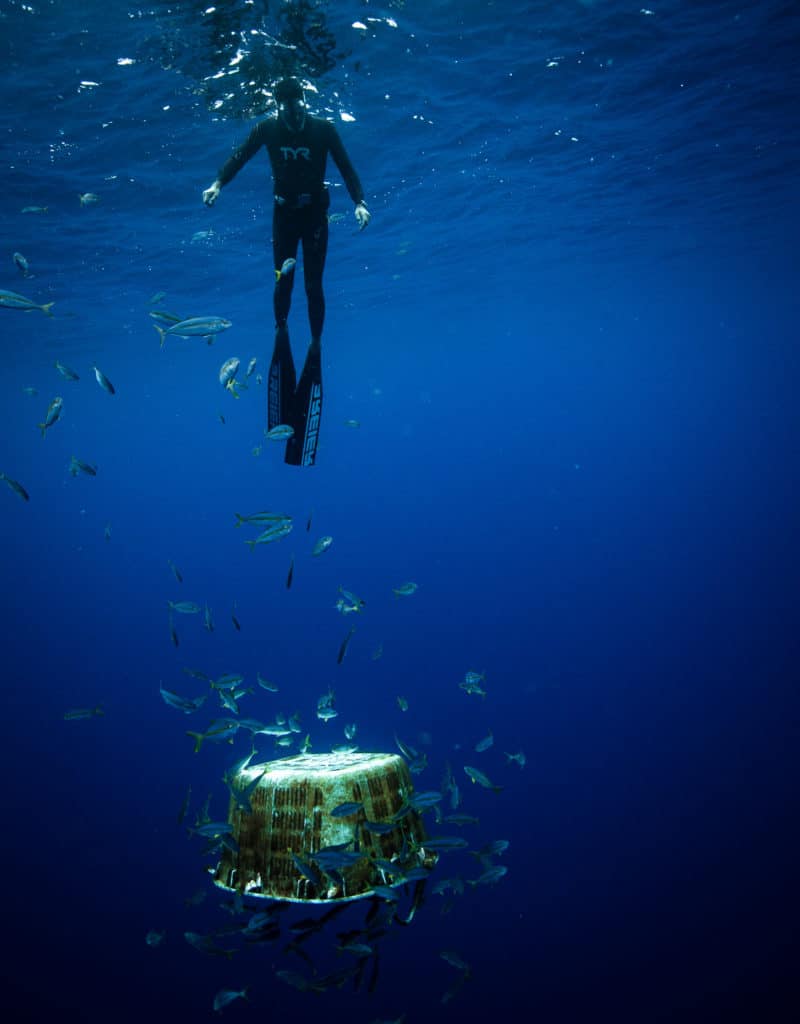

cause 2: fishnets
Fishnets are one of the biggest polluters in the ocean. Many old nets are thrown into the ocean, which is horrible because marine life gets trapped and is unable to escape.
One of the best ways to avoid this is to stop eating fish, or greatly reduce the amount of fish you’re consuming and buy sustainable fish.
Check out seafood watch from Monterey Bay Aquarium to learn more about eco-friendly fishing practices.
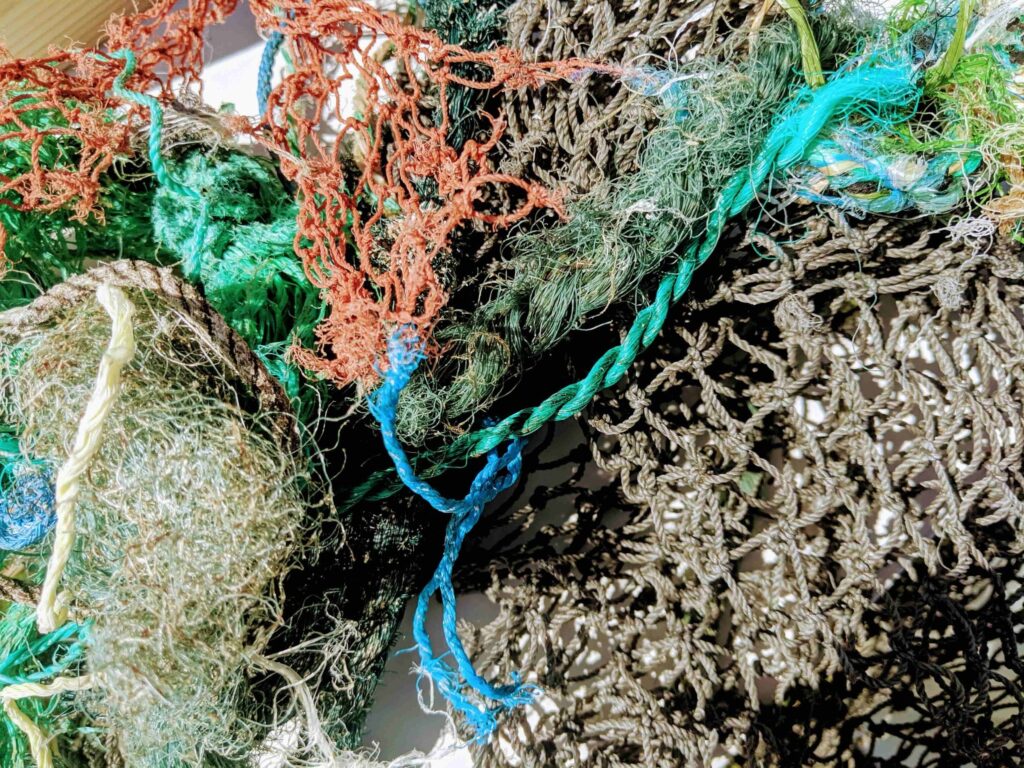

cause 3: glitter
Yep, glitter is plastic. Glitter face masks, sunscreens, festival makeup…. this is all plastic.
When you wash the glitter off of your body, it goes straight down the drain and into the waterways. Because glitter is so tiny, it passes through filtration systems and winds up in the ocean.
Before you apply glitter, ask yourself if you really need to use it.
I’m not sure I’ve ever been in a situation, where I just HAD to use glitter.
Also, biodegradable glitter is now an option. It’s made from cellulose and breaks down very quickly after it’s washed off. Opt for this option if you can’t pass on the glitter.
This brand donates portions of its sales to Greenpeace International.
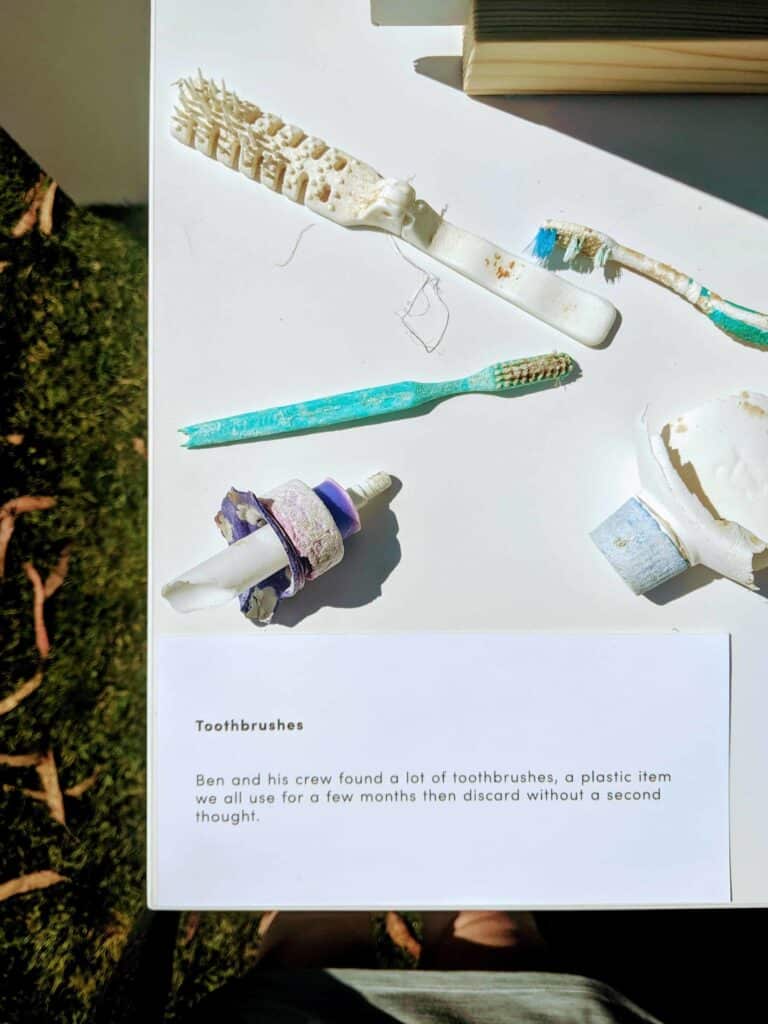

cause 4: microbeads
Microbeads, thankfully, have been banned by most countries.
I think you’d have to go out of your way to find products with microbeads in them now, but they were a major contributor to microplastics in the ocean.
Check your labels just in case, and opt for microbead-free products.
cause 5: tires
Now, this one absolutely shocked me. According to The Guardian, “68,000 tonnes of microplastics from tyre tread abrasion are generated in the UK every year, with between 7,000 and 19,000 tonnes entering surface waters.”
Our tires go bald due to the friction of driving. As they go bald, they lose tiny bits of tire. And when left on the roadway, these pieces make their way to the storm drains which lead out to the sea.
Driving less is the best solution. But, even if you’re taking public buses or biking, there’s still a problem with tires shedding microplastic pieces. It’s probably time for the tire to get a makeover… which is happening!
Michelin has just introduced a biodegradeable and 3-D printed tire that would last forever. Let’s hope this becomes a reality!
cause 6: microfibers
Lastly, microfibers are a major source of plastic pollution in the ocean.
Every time you wash synthetic clothing like polyester, acrylic, and fleece, plastic fibers from the clothing are shed into the waterways.
A study by Plymouth University found that a single load of clothes could release up to 700,000 microplastic particles!
Thankfully, there are a few ways that we can fix this problem!
Opt for Natural Fibers:
When you’re shopping, try to buy clothing made from natural fibers. Here’s a list of natural-based fibers:
- Wool
- Cotton
- Silk
- Hemp
- Linen
- Rayon
- Viscose
- Bamboo
- Lyocell
- Modal
- Cupro
One of the things I love about Icebreaker is their use of sustainable and ethical merino wool.
Wool is amazing for temperature regulation. It’s very breathable and naturally anti-bacterial, which means you can wash your clothing LESS!
Like way less – I wore the same Icebreaker shirt every day for a week, and I didn’t have to wash it once.
And, I personally love it when being eco-friendly allows me to be lazy and avoid doing laundry. Talk about a win-win!
Wash Less:
When it comes to washing your clothes, try to stretch washes. This is a great way to save water and keep your clothes lasting longer.
Just because you’ve worn something once doesn’t make it dirty. If my clothes don’t smell, then I wear them… until they do smell. And, only then do I put them in the washing machine.
Air It Out
Air drying your clothes is a great way to extend their lifespan.
After I’ve worn a shirt, I like to turn it inside out, spray it with this mixture, and hang it up in the open air — like on the door frame of the closet.
I don’t shove the piece back into my closet. I give it room to breathe so air can circulate all around it.
Take Preventative Measures
I do not have a 100% plastic-free wardrobe, but I would say about 80% of my clothing is plastic-free.
The thing is, often times you need a few synthetic fibers to really maintain the integrity of a piece. Then, there’s often a bit of spandex or maybe poly to help prevent clothing from pulling or stretching out of shape.
So, it’s always best to take preventative measures by using something to catch microfibers.
There are several different options like the guppyfriend, microfiber ball, or a washing machine attachment.
faqs
i don’t live near the ocean. am i really contributing to ocean pollution?
Yep. Most ocean pollution starts on land. Any time any pollution makes it to the waterways, it will likely make it to the ocean. This means your sink, toilet, and shower can all be sources of ocean pollution — no matter where you live!
what are the benefits of saving the ocean?
The benefits of cleaning our water are far-reaching! The ocean is largely responsible for climate cooling, provides a huge source of food, and produces more oxygen than the Amazon — not to mention how heavily we rely on it for commerce, economic development, and jobs.
We can’t rely on these benefits if the water is polluted beyond use.
How are you helping to reduce ocean plastic pollution?
I want to thank Icebreaker for sponsoring this post and The Vortex Swim!
If you want to catch the panel I attended after Ben arrived in SF, you can watch it here.
[ad_2]
Source link
